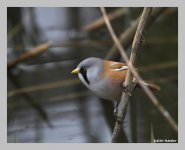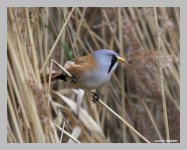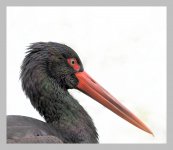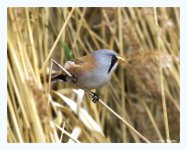Keith Reeder
Watch the birdie...
Hi Websurfer,
here's a different perspective for you to muse over:
"a TC will provide you with more feather detail..."
As soon as I started using a TC I got the real impression that I was getting more detail. I'm convinced it's because I need to crop into my picture much less than I generally need to without the TC, in order to get the required image size and composition.
Think about it: all other things being equal, a 1.4x TC makes the subject 40% bigger in the frame which means that any given element of the scene - including the feather detail - has 40% more pixels on it.
Logically that must mean more detail.
The tiny impact the extra glass in the TC has on IQ is more than made up for by being (optically) 40% nearer to the subject.
Discuss.

here's a different perspective for you to muse over:
"a TC will provide you with more feather detail..."
As soon as I started using a TC I got the real impression that I was getting more detail. I'm convinced it's because I need to crop into my picture much less than I generally need to without the TC, in order to get the required image size and composition.
Think about it: all other things being equal, a 1.4x TC makes the subject 40% bigger in the frame which means that any given element of the scene - including the feather detail - has 40% more pixels on it.
Logically that must mean more detail.
The tiny impact the extra glass in the TC has on IQ is more than made up for by being (optically) 40% nearer to the subject.
Discuss.
Last edited:









